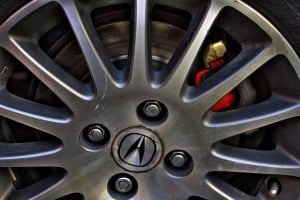
Driving in snow and ice requires complete confidence in your tires. Winter weather can create hard-packed snow, slush, black ice, and freezing rain, and each of these conditions challenges your vehicle in different ways. The right winter tires transform how your car handles cold temperatures, helping you stop faster, corner more securely, and maintain traction when the road surface feels unpredictable.
This guide breaks down exactly what to look for in a snow tire, why they are different from all-season tires, and which winter tires perform the best for real-world driving. Whether you are replacing a full set or buying winter tires for the first time, this will help you make the right choice.
Why Winter Tires Are Essential in Snow and Ice
Winter tires are designed with one goal: to deliver dependable traction and control in cold temperatures. Once temperatures drop below 45°F (7°C), rubber compounds in all-season tires stiffen, reducing grip dramatically. Winter tires avoid this problem by using specialized rubber blends that stay soft and flexible even in freezing weather.
Here are the main reasons winter tires outperform all-season tires in snow and icy conditions:
1. Softer Rubber Compounds
The rubber remains flexible in cold temperatures. This increases the tire’s ability to grip the road and reduces sliding.
2. Aggressive Tread Patterns
Winter tires feature deeper tread blocks and directional patterns that channel snow and slush away from the contact patch. This improves stability and reduces the risk of hydroplaning.
3. Siping for Ice Grip
Sipes are the thin slits cut into the tread blocks. They add hundreds of biting edges, improving traction on ice and hard-packed snow.
4. Better Braking Distance
Winter tires can shorten stopping distance by up to 30 percent compared to all-season tires in snowy conditions.
5. Optional Studding for Extreme Conditions
Some winter tires allow metal studs for maximum grip on severe ice. These tend to be best for rural areas or regions with frequent freeze-thaw cycles.
Top Winter Tires for Snow and Ice in 2025
Here are the best-performing tires for snow, slush, and icy roads based on real-world feedback, cold-weather testing, and tread technology.
1. Bridgestone Blizzak WS90
The WS90 is one of the most trusted winter tires on the market. It uses Bridgestone’s advanced multi-cell compound, which bites into icy surfaces and greatly reduces skidding. The tread design enhances cornering stability and braking control.
Best for: Compact cars, sedans, crossovers.
Strengths: Ice grip, long tread life, consistent handling.
2. Michelin X-Ice Snow
Michelin’s X-Ice Snow offers reliable performance on both wet and icy roads. It is known for comfort, quiet ride quality, and long wear. This tire is popular among drivers who want winter capability without sacrificing smoothness.
Best for: Sedans, coupes, small SUVs.
Strengths: Excellent stopping power, comfort, durability.
3. Nokian Hakkapeliitta R5
Nokian, a company originating from Finland, is famous for winter tire innovation. The Hakkapeliitta R5 continues that legacy with superb traction on snow and ice. It stays flexible even in subzero temperatures and handles slush especially well.
Best for: Harsh winter regions.
Strengths: Cold-weather stability, slush performance, premium traction.
4. Continental VikingContact 7
This tire delivers balanced winter handling with impressive braking performance. The directional tread helps keep the vehicle stable on corners and during abrupt maneuvers.
Best for: Sedans and compact SUVs.
Strengths: All-around winter control, predictable handling.
5. Cooper Evolution Winter
A dependable winter tire at a more accessible price point. The Evolution Winter offers strong traction on snow and ice, making it popular among budget-conscious drivers who still want true winter safety.
Best for: Passenger vehicles and crossovers.
Strengths: Affordability, reliable winter grip.
6. BFGoodrich Winter T/A KSI
This tire performs well in mixed conditions, including deep snow, slush, and partial ice. It is built for stability and traction during daily winter driving.
Best for: City and suburban driving.
Strengths: Slush evacuation, traction in deeper snow.
Studded vs. Studless: Which Should You Choose?
Studded winter tires use small metal studs embedded in the tread. These provide excellent grip on icy or compacted snow surfaces.
Studless tires rely on advanced siping, rubber compounds, and tread design to deliver ice traction.
Here is how to decide between them:
Choose studded tires if:
- You drive on untreated or rural roads
- You frequently encounter glare ice
- Temperatures stay below freezing for long periods
Choose studless tires if:
- You mostly drive in the city or on maintained highways
- You want lower road noise
- You prefer a smoother ride
Most drivers choose studless tires because they perform extremely well and are legal in all areas.
Winter Tires for Trucks and SUVs
Larger vehicles need winter tires that support heavy loads and maintain traction under weight. These are top options for trucks and SUVs:
1. Bridgestone Blizzak DM-V2
Designed specifically for SUVs and light trucks, this tire handles deep snow impressively well.
2. Michelin X-Ice Snow SUV
A smooth, quiet winter tire with excellent traction.
3. Nokian Hakkapeliitta LT3
Strong winter performance with extra durability for heavier vehicles.
How to Choose the Right Winter Tires
When selecting winter tires, consider these factors:
1. Your region’s winter severity
Colder climates with frequent ice call for premium winter tires.
2. Your driving habits
Highway commuting, mountain driving, or rural roads each have different tire needs.
3. Your vehicle type
Check load rating and size before buying.
4. Your budget
Winter tires range from affordable to high-end. Even budget winter tires are better than all-season tires in winter conditions.
When to Install Winter Tires
Don’t wait for the first snowfall. Install winter tires when temperatures consistently stay below 45°F. This ensures the rubber is performing as designed from the start of winter.
Winter tires are one of the most important safety upgrades you can make during cold-weather months. The right set will help you stop faster, handle more confidently, and drive with peace of mind during snowstorms, icy mornings, and slushy commutes.
If you need dependable winter tires with flexible payment options, visit Dan the Tire Man. We offer brand new tires with as little as $0–49 out of pocket and no hard credit check. Free shipping makes winter prep even easier.





